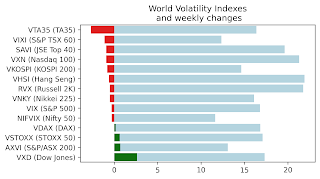Correct modelling of this is interesting for both options and futures pricing, as average process has obviously less volatility than "regular" process. How much less? Well, apparently I fell asleep during a class because I have no recollection of the formula until I recently researched it.
B(t) is ABM, then
.gif) has variance of
has variance of.gif)
In simple terms, average has 1/sqrt(3), or about 58% of volatility.
Simple example: assume BTC/USD volatility of 100% per year. Expected volatility over 30 days should be sqrt(100 * 100 * 30/365) = 28.67%. However if the contract settles to the last day's average, for options pricing we should use volatility of sqrt(100 * 100 * 29/365 + 100 * 100 * 1/365 / 3) = 28.35%, slightly lower.
In conclusion: average settlement - interesting, but of little practical importance from pricing perspective.
P.S. Re: Atlas ATS - could not get their API to work, waiting for LedgeX.



No comments:
Post a Comment